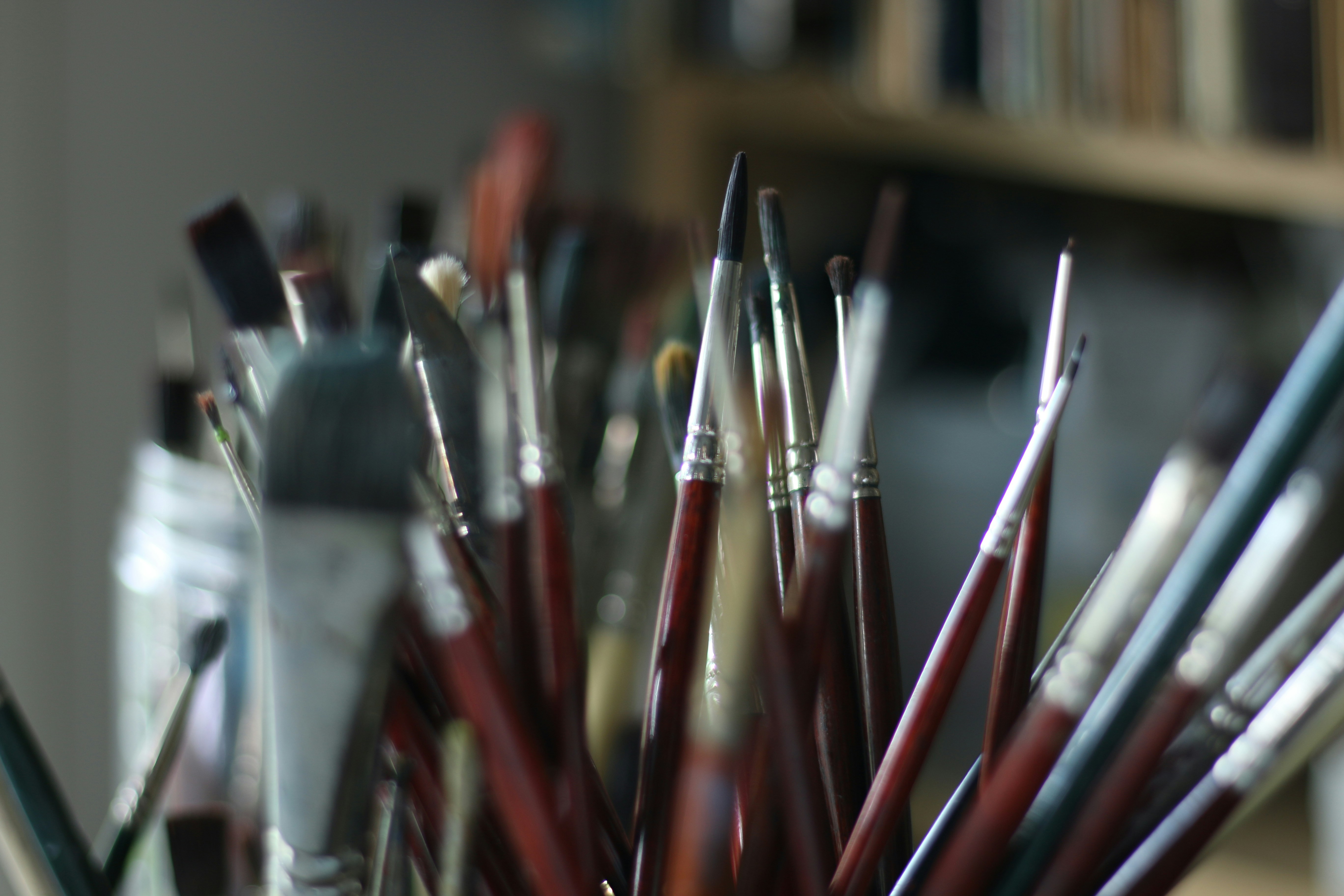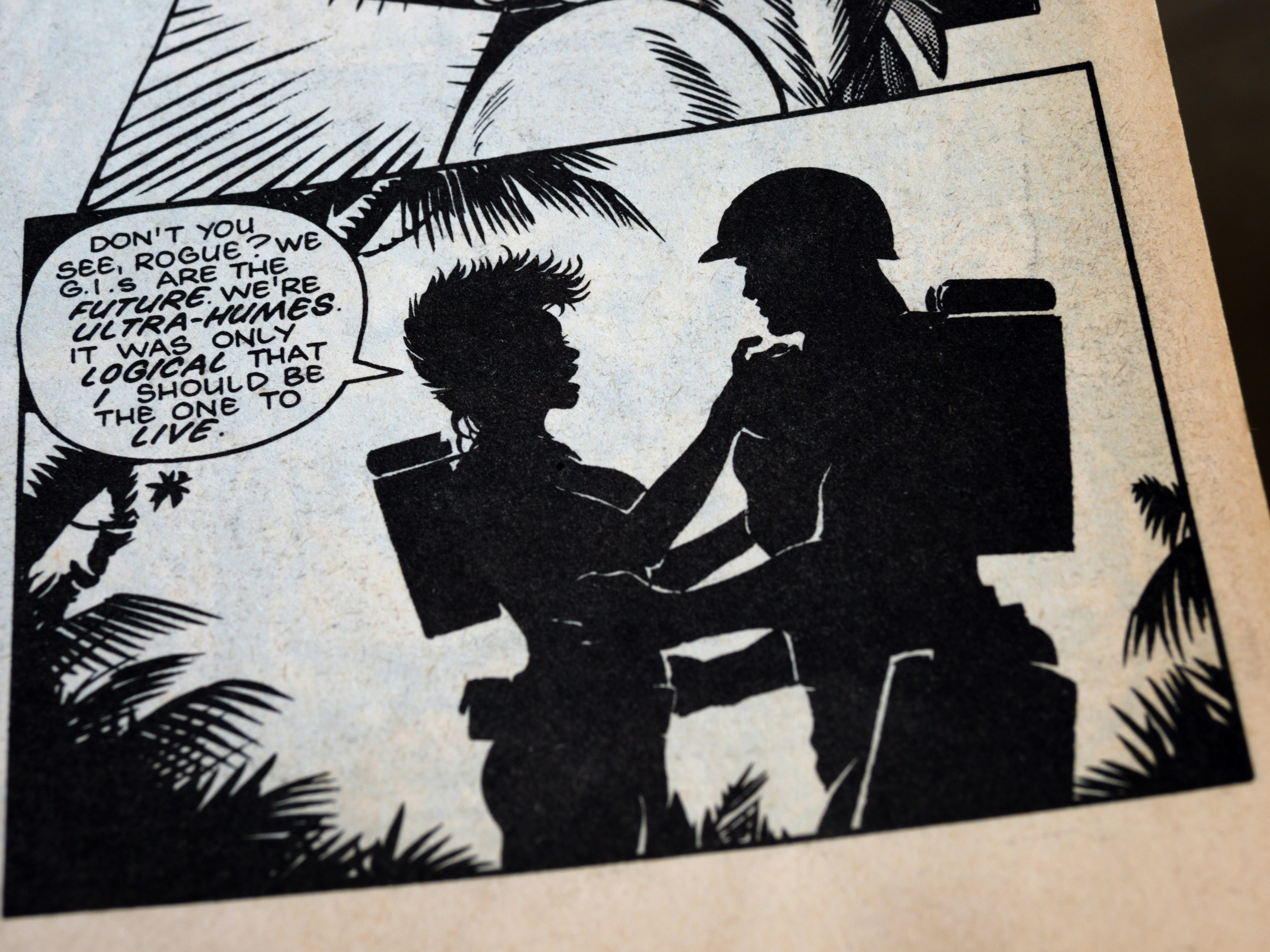13 Essential Inking Techniques for Comics
by WriteSeen
For comic artists eager to elevate their craft, mastering inking techniques for comics is essential. This guide explores 13 crucial methods, giving your art an edge with texture, depth, and style.
Discover how to choose the right tools, perfect line weight, and balance contrasts to transform your illustrations into captivating stories. Join us in refining your unique style and turning each panel into a masterpiece.
1. Choosing the Right Inking Tools
The journey of mastering comic inking begins with the right tools. Your choice dictates the flow and dynamism of your storytelling. Whether you're reaching for a trusty brush pen or a high-tech digital stylus, knowing your options gives you the freedom to express your unique voice.
Traditional Tools vs. Digital
- Brushes and G-pens: Offer organic flexibility and rich texture. They’re ideal for creating varied line weights and fluid strokes.
- Technical pens: Provide consistent lines, perfect for detailed work and architectural backgrounds.
- Digital styluses: Transform your canvas into a limitless playground, where brushes can mimic traditional tools with precision settings.
Understand how these enable distinct effects. A brush pen might emphasize motion in an action scene, while a digital stylus adjusts line thickness seamlessly, adapting to every creative need.
Mastering your tools is the first step to telling captivating stories.
2. Mastering Line Weight Variations
Line weight is a silent communicator in comics. It sets the mood and directs the viewer’s eye—guiding them across the page with purpose. Experiment with different thicknesses to find what complements your narrative style.
Key Techniques to Explore
- Heavy lines: Increase drama and bring focus to the foreground or key characters.
- Light lines: Add subtlety and depth to backgrounds, showing contrast and nuance.
- Dynamic variation: Allows for emotional expression. Thicker lines can convey strength or aggression; thinner ones, delicacy or hesitation.
Implement line weight strategically. Observe how comic legends enhance narratives with varied strokes. Decide how bold or delicate you want your characters to appear, and understand how this will guide your reader's perception.
3. Building Texture with Lines
Texture breathes life into comic art. It turns flat images into immersive scenes that engage readers and enrich storytelling. From gritty urban landscapes to soft, fleshy skin, texture defines the tactile experience of your world.
Texture Techniques
- Cross-hatching: Multiple layers of intersecting lines that create depth and shadow.
- Stippling: Dots that form gradients, useful for highlighting or creating intricate details.
- Marbling and dry-brushing: Ideal for unique finishes, adding smoothness or raw edges.
Texture conveys reality—your audience feels the roughness of a stone wall or the softness of a cloud. Develop a skillful combination of techniques that echo your story’s mood and your artistic vision.
Textures transform static frames into vivid narratives.
4. Understanding Line Direction and Flow
Imagine leading your audience through an intricate map of your making. Lines are the roads that guide them, shaping the rhythm and pace of your story. Line direction can evoke emotion and highlight action.
Strategic Flow Techniques
- Radiating lines: Focus on a central point to enhance tension and drama.
- Curved lines: Suggest movement and grace, perfect for depicting motion.
- Diagonal lines: Imply speed and chaos, charging action scenes with energy.
When lines flow, they create balance and movement. They dictate how a reader experiences each panel, guiding their emotional response and maintaining engagement.
5. Spotting Blacks and Balancing Contrast
Inking goes beyond lines—it's about creating contrast that elevates the drama and intensity of your scenes. Spotting blacks involves strategic placement of dark areas to balance your composition.
Enhancing with Contrast
- Silhouettes: Use heavy blacks to define shapes and create stark, memorable scenes.
- Feathering: Soften transitions, helping readers move smoothly from light to dark areas.
- High contrast: Sharpens focus, helping key elements stand out amid complex compositions.
Smartly balanced contrast pulls your reader’s focus exactly where you want it. It frames your comic’s mood and heightens the atmospheric tension, ensuring your story leaps off the page.
A balanced composition makes your narrative unforgettable.
6. Applying Shading Techniques
Shading shapes the dimensional form of your characters and settings, turning flat artwork into a dynamic visual experience. Different shading techniques will breathe depth into your world.
Shading Methods
- Gradients: Smooth transitions between light and dark make elements pop.
- Chiaroscuro: Emphasize contrast for a dramatic look that enhances tension.
- Hatching: Line spacing that builds volume, ideal for contouring and adding structure.
Precision in shading conveys the intricacies of light placement and the play between shadows and highlights. It layers your imagery, immersing your audience into the tangible world you create.
7. Creating Dynamic Inking Effects
Dynamic effects amplify the intensity of your comics, capturing moments in fluid motion. Special effects draw readers in and keep them engaged, transforming static frames into kinetic experiences.
Techniques for Dynamic Effects
- Motion lines: Convey speed and direction to enhance action sequences.
- Highlights and reflections: Add realism and depth, whether illustrating a shiny surface or a glistening eye.
- Overlapping elements: Create layers that make scenes feel lively and three-dimensional.
Your audience craves action and excitement on every page. These dynamic techniques ensure your storytelling remains thrilling and visually captivating, holding their attention from the first glance to the final frame.
8. Developing Your Personal Style
Your personal style is your artistic fingerprint. It’s what sets your work apart in a sea of other comics. Developing this unique voice requires embracing both experimentation and consistency, blending techniques you've mastered with your own creative flair.
Steps to Cultivate Your Style
- Study different artists: Analyze what resonates with you and dissect their techniques. What makes them stand out? Incorporate elements that align with your vision.
- Maintain consistency: Once you’ve identified elements of your style, be consistent. It shows professionalism and strengthens your artistic identity.
- Blend old and new: Combine traditional techniques with modern innovations to keep your work fresh and exciting. It's all about finding balance.
Perfecting your style is a journey. Continuously evolve while staying true to your artistic instincts. The world of comics thrives on originality—match your exploration with unyielding practice and your unique style will shine through.
9. Techniques for Digital Inking
Digital inking bridges traditional art with technology, expanding your toolkit and possibilities. It opens doors to precision, efficiency, and adaptability without losing the authenticity of hand-drawn lines.
Leveraging Digital Innovations
- Layer flexibility: Work on multiple layers to easily edit without affecting your entire drawing. This adds depth and allows for experimentation.
- Custom brushes: Tailor-brush settings to emulate any effect—whether it's the soft wash of a watercolor brush or the bold intensity of a marker.
- Editability and undo: Experiment fearlessly. Adjust and correct as needed. The undo button is your safety net.
Digital tools enhance your ability to adapt and push creative boundaries. Whether maintaining traditional aesthetics or exploring new realms, digital inking complements every artist's toolbox.

10. Troubleshooting Common Inking Issues
Even seasoned artists encounter challenges with inking. Understanding common problems equips you with the strategies needed to avoid pitfalls and maintain high-quality results.
Solutions to Common Problems
- Smudged lines: Patience is key. Allow ink to dry thoroughly. For digital, ensure layers don't overlap incorrectly.
- Uneven lines: Maintain consistent pressure and practice steady hand exercises. For digital, adjust the sensitivity of your stylus.
- Bleeding ink: Choose paper and materials wisely. Test pens on your chosen medium before the final work to avoid mishaps.
Knowing how to tackle these issues is part of honing your craft. Preparation and technical understanding underpin the inking process, safeguarding your vision and execution.
11. Practicing Precision and Steadiness
Precision and steadiness are cornerstones of exceptional inking. They contribute to the clarity and impact of your artwork. Steady hands draw crisp, defined lines that capture your audience’s attention.
Practice Techniques
- Hand exercises: Regular hand exercises boost control and reduce fatigue, essential for long inking sessions.
- Controlled breathing: Calm, steady breathing maintains focus and precision during detailed work.
- Consistent practice: Regular drawing routines develop muscle memory, improving your hand steadiness over time.
With discipline and patience, precision becomes second nature. It separates good work from great, laying a firm foundation for intricate detailing and storytelling.
12. Balancing Detail and Simplicity
The tension between detail and simplicity plays out in every panel. Overloading with detail can confuse; too little might underwhelm. Balance is crucial in creating harmonious and impactful visuals.
Strategies for Balance
- Focus on readability: Ensure scenes are easily digestible. Prioritize clarity over complexity to guide your reader naturally through the narrative.
- Use negative space: It’s not just what you draw; it’s also what you don’t. Skillful use of negative space enhances focus and aesthetic appeal.
- Highlight key elements: Use detail where it matters most. Allow less critical areas to be simpler to keep the focus where it belongs.
Finding this balance elevates your storytelling. It aligns the visual experience with narrative intent, ensuring each element contributes to a cohesive whole.
13. Experimenting with Traditional vs. Modern Techniques
Exploration sparks innovation. By experimenting with both traditional and modern techniques, you unlock new dimensions to your artistry. This duality enriches your craft, offering the best of both worlds.
Exploring Techniques
- Traditional appeals: Embraces organic textures and raw imperfections. They create an authentic, timeless aesthetic.
- Modern precision: Digital methods offer unrivaled detail and flexibility, integrating cutting-edge technology into your creative process.
- Hybrid approaches: Combine techniques for a unique blend, creating visually compelling and inventive artwork.
Your artistic journey flourishes with experimentation, forever expanding what your work can achieve. Let diversity in approach lead to a style that is unmistakably yours.
Conclusion
Mastering inking techniques comics artists rely on can transform your illustrations from flat sketches into bold, expressive narratives. From choosing the right tools to applying contrast, shading, and texture, each method helps you tell your story with clarity and emotion. These techniques are the backbone of powerful comic art.
Whether you lean into traditional tools or explore digital workflows, consistency and experimentation are key. Keep refining your personal style, troubleshoot with intention, and use your line work to guide readers through every panel. The best inking techniques comics pros use come from practice, patience, and passion.
Ready to share your style with the world? Join WriteSeen, where comic artists connect, grow, and get seen. Collaborate, get feedback, and build your presence in a community that celebrates your creativity—sign up now and bring your panels to life.
TAGS

